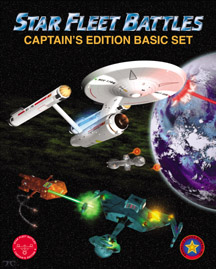
Star Fleet Battles (SFB) is a tactical board wargame set in an offshoot of the Star Trek setting called the Star Fleet Universe. Originally created in 1979 by Stephen V. Cole, it has had four major editions. The current edition is published by Amarillo Design Bureau as Star Fleet Battles, Captain's Edition.
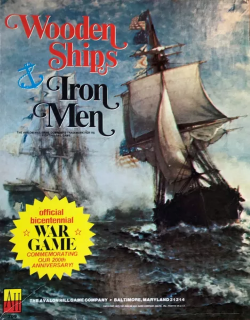
Wooden Ships and Iron Men is a naval board wargame simulating naval combat during the Age of Sail that was published by Battleline Publications in 1974, then revised and republished by Avalon Hill the following year.

White Bear and Red Moon is a fantasy board wargame set in the world of Glorantha, created by Greg Stafford and published in 1975. Stafford first tried to sell the game to established publishers, but despite being accepted by three different game companies, each attempt ended in failure; eventually he founded his own game company in 1974, the influential Chaosium, to produce and market the game.

Full Thrust is a science fiction strategy wargame written by Jon Tuffley and published by Ground Zero Games of England. It is usually played with miniature figurines representing imaginary starships, although cardboard chits representing the vessels can also be used. Unlike many games, the publishers encourage the use of any miniatures rather than only "official" ones, though Ground Zero Games does also sell an extensive miniature range.

PanzerBlitz is a tactical-scale board wargame published by Avalon Hill in 1970 that simulates armored combat set on the Eastern Front of World War II. The game, which was the most popular board wargame of the 1970s, is notable for being the first true board-based tactical-level, commercially available conflict simulation wargame. It also pioneered several concepts that would become industry standards.

Squad Leader is a tactical level board war game originally published by Avalon Hill in 1977. It was designed by John Hill and simulates on infantry combat in Europe during World War II. One of the most complex war games of its time, Squad Leader is the natural extension of the trend towards greater realism initiated by several earlier games, including Avalon Hill's own PanzerBlitz and Panzer Leader. Those two earlier games were slightly larger in scope, with counters representing platoons and map hexes measuring 250 metres across, compared to Squad Leader's 40 meter hexes and squad sized units.

Triplanetary is a science fiction board wargame originally published by Game Designers' Workshop in 1973. The game is a simulation of space ship travel and combat within the Solar System in the early 21st Century.
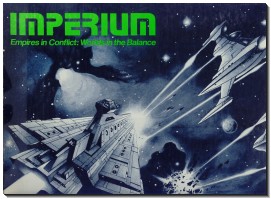
Imperium is a science fiction board wargame designed by Marc W. Miller, and published in 1977 by the Conflict Game Company and Game Designers' Workshop (GDW). It features asymmetrical forces, each of the two sides having its unique set of constraints. The game came in a cardboard box illustrated with a space battle on the exterior. It included a cardboard-mounted, folding map of a local region of the Milky Way galaxy, a set of rules and charts, and the 352 counters representing the various spacecraft, ground units, and markers, and a six-sided die. A second edition was published in 1990, a third in 2001, and the first edition republished in 2004.
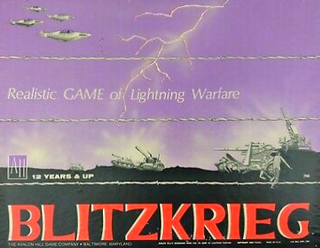
Blitzkrieg is a strategic-level wargame published by Avalon Hill in 1965 that simulates a non-historical attack by one major power against another using the blitzkrieg strategy. It was the first commercial wargame that did not simulate an actual historical battle, and with almost 400 counters, it was a precursor to the "monster" wargames of the 1970s featuring more than a thousand counters.

1776, subtitled "The Game of the American Revolutionary War", is a board wargame published by Avalon Hill in 1974 that simulates the American Revolutionary War. Its release was timed to coincide with the bicentenary of the Revolution, and for several years was a bestseller for Avalon Hill.
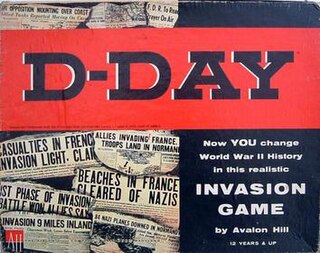
D-Day is a board wargame published by Avalon Hill in 1961 that simulates the six months of the European Campaign of World War II from the Normandy Invasion to the crossing of the Rhine. It was the first wargame to feature the now ubiquitous hex grid map and cardboard counters, and was revised and re-released in 1962, 1965, 1971, 1977 and 1991.

The Arab-Israeli Wars, subtitled "Tank Battles in the Mideast 1956–73", is a board wargame published by Avalon Hill in 1977 that simulates various battles during the Suez Crisis, Six-Day War and Yom Kippur War.
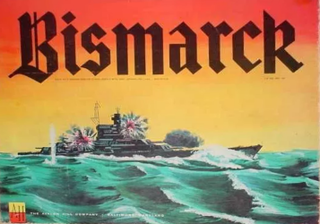
Bismarck is a board wargame published by Avalon Hill in 1962 that simulates the hunt for the Bismarck.

StarForce: Alpha Centauri, subtitled "Interstellar Conflict in the 25th Century", is a science fiction board game published by Simulations Publications Inc. (SPI) in 1974. It was the first mass-market science fiction board wargame, and was a best-seller for SPI.

Air Force is a board wargame published by Battleline Publications in 1976, and subsequently re-released by Avalon Hill in 1977, that simulates air combat during World War II. Several expansions for the game were also published.

Machiavelli is a board game published by Battleline Publications in 1977. Set in Renaissance Italy, the board is controlled by the Republic of Florence, the Republic of Venice, the Duchy of Milan, the Kingdom of Naples, the Papacy, Valois France, Habsburg Austria, and the Ottoman Turks.

Star Patrol is a science fiction role-playing game published by Gamescience in 1977.

The Ythri is a board wargame published by Metagaming Concepts in 1975 that is based on the 1973 science fiction novel The People of the Wind by Poul Anderson.

Outreach, subtitled "The Conquest of the Galaxy, 3000 AD", is a science fiction board wargame published by SPI in 1976 that simulates galactic empire building.

Submarine is a board wargame published by Battleline Publications in 1976 that simulates submarine warfare during World War II. The following year, Avalon Hill bought the rights to the game, expanded the rules and republished it with new cover art.




















